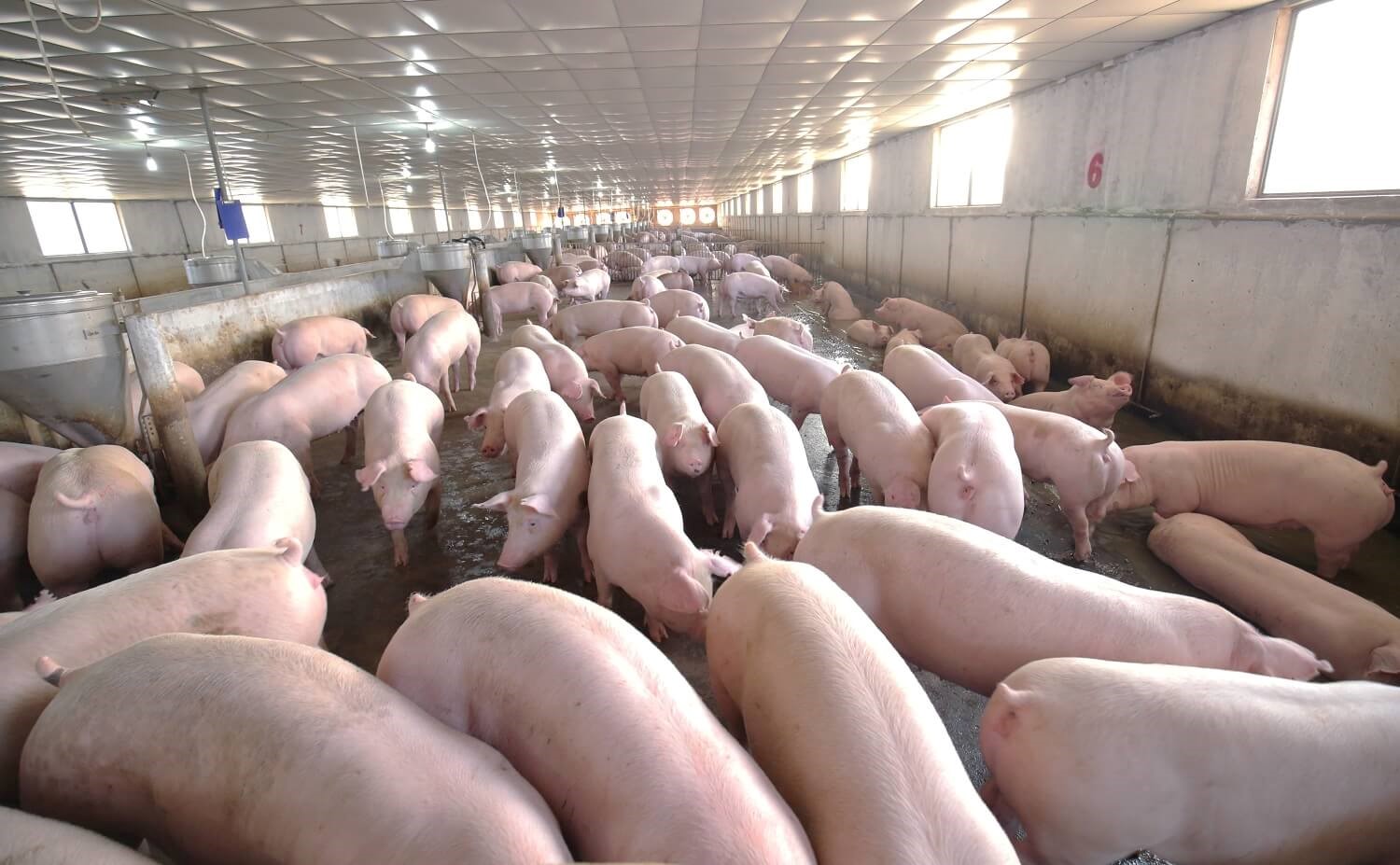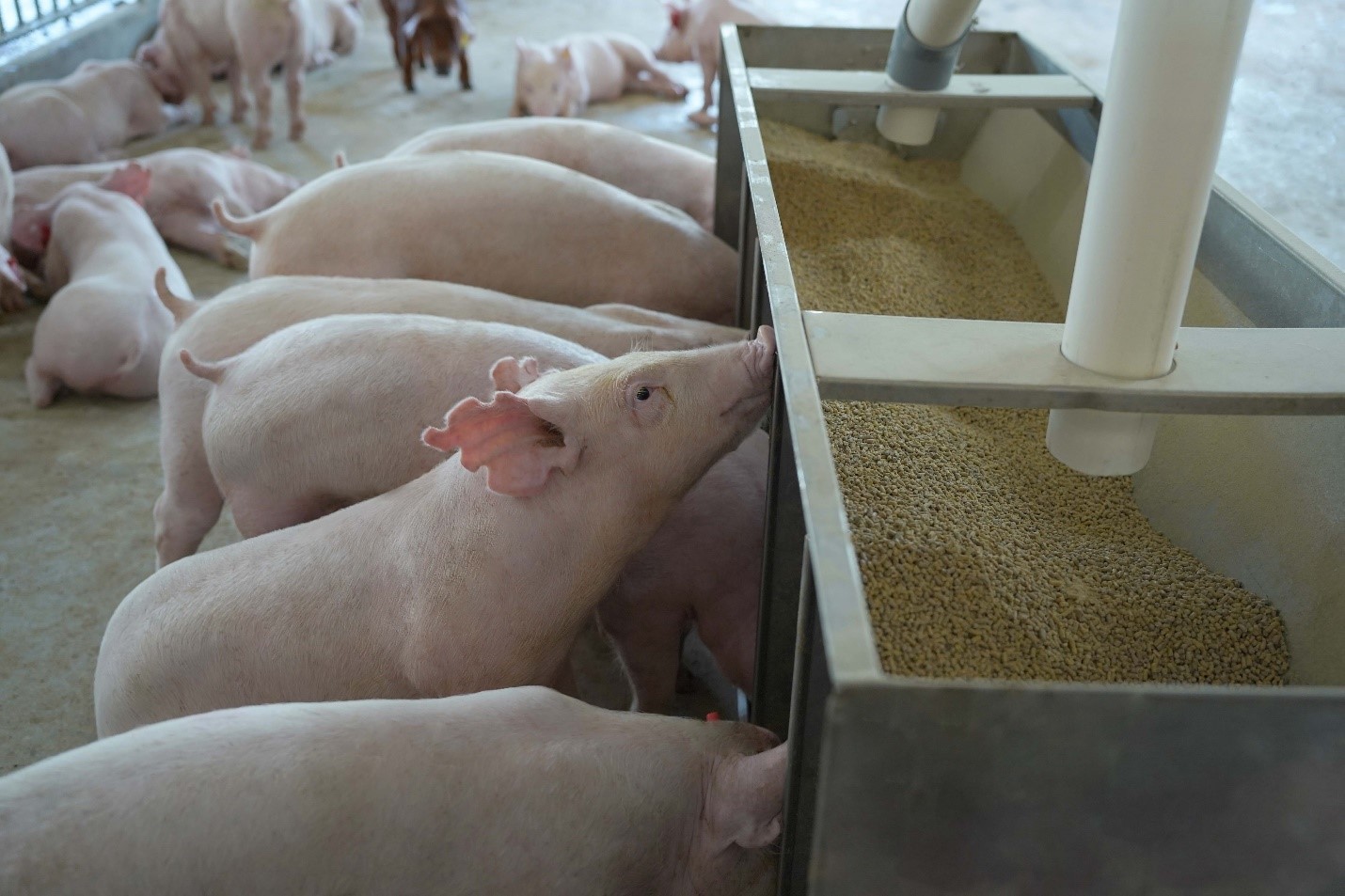Pasteurellosis is a highly contagious and dangerous infectious disease commonly seen in pigs, causing significant economic losses if not detected and treated promptly.
In pig farming, this disease can cause sudden mass mortality within a short time. It is an acute bacterial infection caused by Pasteurella multocida. Without timely detection and control, it can lead to severe losses to the entire herd.
1. CAUSE OF THE DISEASE
The main causative agent is Pasteurella multocida. This bacterium can reside in the respiratory tract of healthy pigs and cause disease when favorable conditions arise.

Predisposing factors include:
– Sudden changes in weather, especially during the rainy or cold, humid seasons.
– Stress due to transportation, regrouping, or weaning.
– Concurrent infections such as PRRS, swine influenza, or Mycoplasma infections that weaken the immune system.
– Rapid transmission occurs through direct contact, aerosol, contaminated feed, water, or farming equipment.
2. CLINICAL SIGNS
Depending on severity, the disease may appear in different forms:
Peracute form:
– Sudden death without obvious signs.
– High fever (41–42°C).
– Rapid breathing, dyspnea, cyanosis.
– Death may occur within a few hours.
Acute form:
– High fever (40.5–41.5°C).
– Loss of appetite, lethargy.
– Coughing, abdominal breathing, nasal discharge (sometimes blood-tinged).
– Swelling of the head, neck, and chest. Subcutaneous hemorrhages on thin-skinned areas such as ears, neck, chest, and abdomen.
– Mortality rate may reach 50–70% if not treated in time.
Chronic form:
– Emaciation, poor growth.
– Persistent nasal and ocular discharge, prolonged coughing, pneumonia, swollen joints.
– Constipation followed by diarrhea.
– The condition may last for several weeks, causing stunted growth.

3. LESIONS ON NECROPSY
Postmortem examination of pigs that died from pasteurellosis often reveals:
– Hemorrhages in multiple organs such as heart, lungs, and lymph nodes.
– Severe pneumonia with fluid accumulation; lungs may adhere to the thoracic wall.
– Enlarged liver and spleen.
– Pericardium and pleura contain yellowish, fibrinous exudate.
– Swollen, hyperemic pharyngeal and pulmonary lymph nodes.
4. TREATMENT
When clinical signs appear, immediate intervention is required:
Use specific antibiotics:
Administer one of the following: Amoxicillin or Penicillin combined with Streptomycin, or Florfenicol, or Enrofloxacin.
Recommended products: BIOCILLIN 150 LA, PENSTREP 400, FLONINE LA, OR INTERFLOX 100.
Use continuously for 3–5 days.
Supportive treatment:
– For high fever: use antipyretic and analgesic injections such as ANALGIN 500 INJ OR KETOPROFEN to reduce stress and promote recovery.
– For general support and recovery: use BUTASAL 100 OR BUTAVIT 100 to improve metabolism and immune response.
5. PREVENTION
In pig production, prevention is always more important than treatment. Implement the following measures:
– Keep pig houses clean, dry, and well-ventilated.
– Regularly disinfect pens, feeders, and water systems.
– Minimize stress: avoid random regrouping and sudden environmental changes.
– Provide balanced nutrition, vitamins, and minerals to enhance immunity.
6. PREVENTION
In pig production, prevention is always more important than treatment. Implement the following measures:
– Keep pig houses clean, dry, and well-ventilated.
– Regularly disinfect pens, feeders, and water systems.
– Minimize stress: avoid random regrouping and sudden environmental changes.
– Provide balanced nutrition, vitamins, and minerals to enhance immunity.

Vaccination schedule:
– First dose: for piglets aged 20–30 days.
– Second dose: booster at 40–50 days of age.
– Repeat every 4–6 months, or before the rainy season when pigs are more prone to stress.
Also, ensure proper control of other diseases such as PRRS, swine influenza, and Mycoplasma infections, which can predispose pigs to pasteurellosis outbreaks.
Swine pasteurellosis is a highly contagious and fatal disease with a high mortality rate. However, it can be effectively prevented through proactive management by:
– Maintaining clean, dry, and hygienic housing conditions to minimize stress in the herd.
– Administering vaccines properly and on schedule.
– Detecting early signs and providing timely treatment with appropriate antibiotics and supportive therapy.
Pasteurellosis in pigs is a fast-spreading, high-mortality disease that poses a serious threat to swine herds. However, it can be effectively prevented through strict hygiene, stress reduction, proper vaccination, and early diagnosis with timely antibiotic treatment. Maintaining these measures is essential for ensuring herd health and achieving sustainable livestock productivity.
